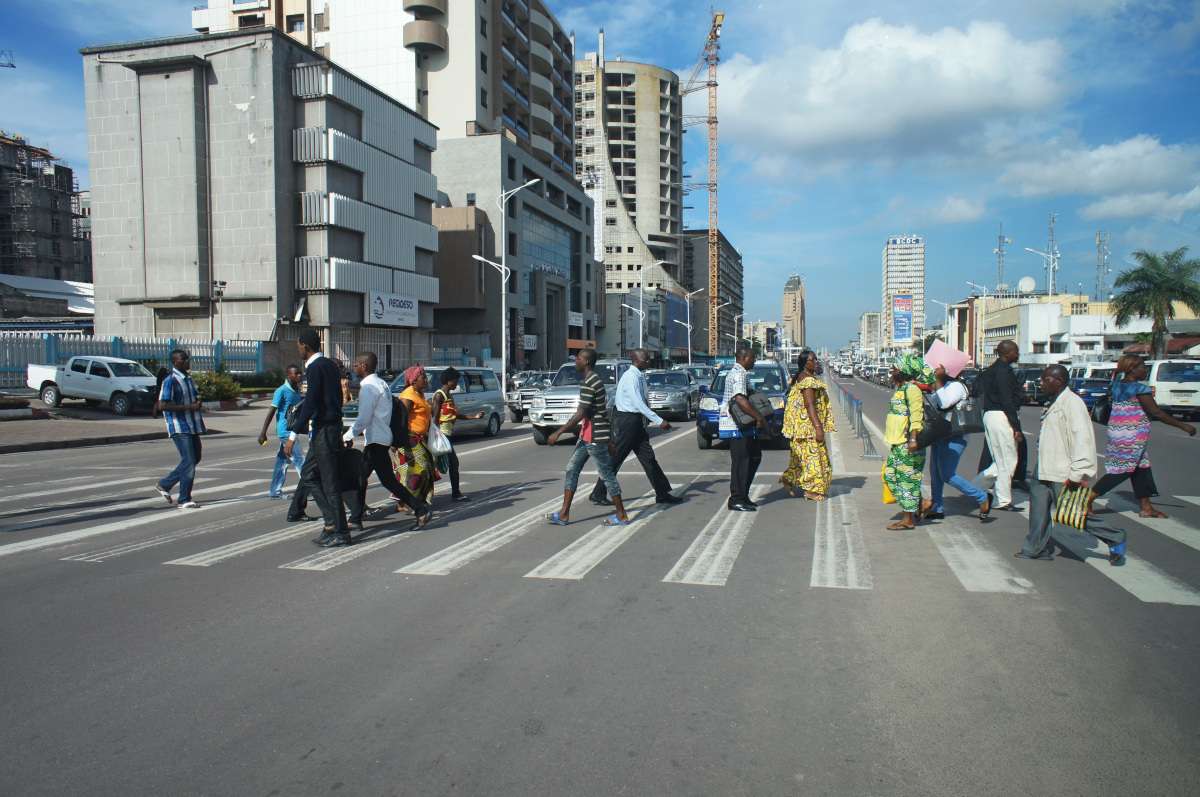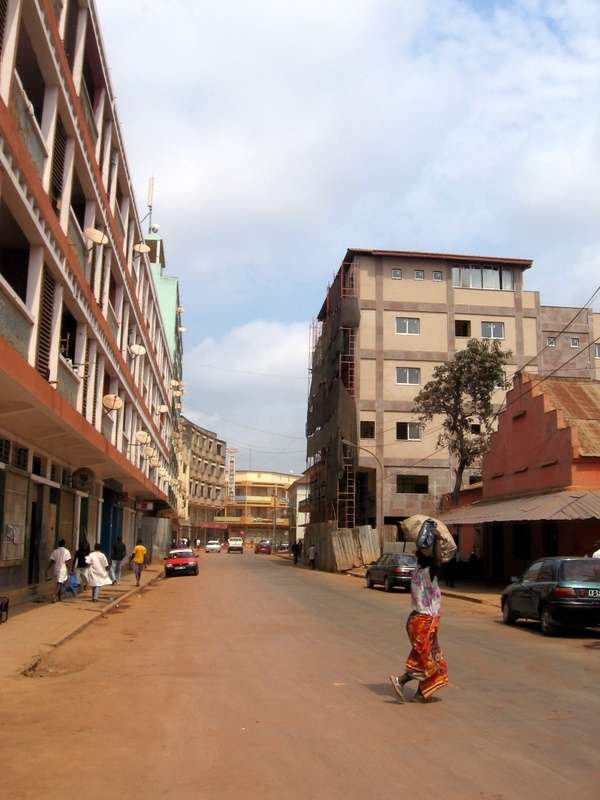
By 2050, 68 per cent of the world population is projected to live in urban areas. Here are the world’s 10 fastest growing cities by population
All across the world, urban areas are expanding and their populations growing. By 2050, two out of every three people are likely to be living in cities or other urban centres. India, China and Nigeria stand at the forefront of this rise, projected to account for 35 per cent of the growth of the world’s urban population between 2018 and 2050.
Here, we take look at the fastest growing urban centres by population (not including cities with fewer than 300,000 inhabitants), as predicted by the UN for the years 2020-2025. Of the 20 fastest growing, 15 are predicted to be located in Africa. Another four are in Asia and one is in the Middle East. In Europe, the city with the fastest growing population is Balashikha in Russia (with a growth rate of 2 per cent), but overall, the continent is the only one likely to see a decrease in population by 2025
10 Fastest Growing Urban Centres By Population
1
Gwagwalada, Nigeria: +6.46%
Population estimate: 2020: 410,000 • 2025: 566,000
Since Nigeria’s seat of government was relocated from Lagos to Abuja in 1991, Gwagwalada, 45 kilometres southeast of the capital, has experienced a massive influx of people. It is projected to have the largest increase in population on the African continent, and is the fastest growing urban centre in the world.
2
Kabinda, DRC: +6.37%
Population estimate: 2020: 466,000 • 2025: 640,000
Kabinda is the capital city of Lomami Province, in a remote part of the south-central Democratic Republic of the Congo. It is located around 100 kilometres east of Mbuji-Mayi, the second largest city in the country after the capital Kinshasa. The surrounding area is one of the richest mineral sources in the world and produces one-tenth in weight of the world’s industrial diamonds.
Continental changes
When it comes to population growth as a whole, Africa is predicted to grow the most (2.46%) by 2025, compared to Asia (0.75%), South America (0.85%), Central America (1.13%), North America (0.71%) and Oceania (1.23%). Europe is the only continent predicted to decrease (-0.02%.).
3
Rupganj, Bangladesh: +6.36%
Population estimate: 2020: 482,000 • 2025: 662,000
The third fastest growing city is Rupganj, an upazila (‘sub-district’ in Bengali) of the Narayanganj District in central Bangladesh. Narayanganj is an industrial hub that plays an important role in the country’s jute trade (jute is a natural fibre extracted from the bark of the jute vegetable plant). It’s also the historic home of the production of jamdani, a fine muslin textile woven from cotton and gold threads, which is used for making saris.

4
Lokoja, Nigeria: +5.93%
Population estimate: 2020: 692,000 • 2025: 931,000
Lokoja is a river port on the west bank of the Niger River in south-central Nigeria. The present day city was founded by Scottish explorer William Balfour Baikie in 1857, but for hundreds of years prior the area had been home to different ethnic groups, including the Yoruba people. The modern city is an important trading port for cotton, leather, and palm oil and kernels. Locally produced yams, corn, beans, fish and shea nuts are also sold at the large markets here.

5
Uige, Angola: +5.92%
Population estimate: 2020: 511,000 • 2025: 687,000
Between 1945 and the mid-1950s, Uige grew from a small market town in northwestern Angola to the country’s major centre for coffee production. First settled by Portuguese colonists, the town was renamed in 1955 to Carmona, after the former Portuguese President Óscar Carmona. Following the start of the Angolan civil war in 1975 however, when the settlers fled, the city’s name was changed back to Uige.

New megacities
There are currently 35 megacities (those with a population of more than 10 million), with eight more expected to join the ranks by 2030, all but one of which (London) are in developing countries. It has been 200 years since Britain’s capital was the most populous place on the planet, but after a period of decline in the second half of the 20th century, it is once again growing fast.
6
Bujumbura, Burundi: +5.57%
Population estimate: 2020: 1,013,000 • 2025: 1,350,000
The former capital of Burundi, Bujumbura is also the country’s main port, located at the northeastern corner of Lake Tanganyika. Most of Burundi’s foreign trade flows through here on its way to and from Kigoma in neighbouring Tanzania. Bujumbura was the capital of Burundi until 2019, when the parliament voted to move the seat of government back to the historic capital of Gitega.

7
Songea, Tanzania: +5.74%
Population estimate: 2020: 353,000 • 2025: 470,000
Between 1905 and 1907, Songea was the centre of African resistance during the Maji Maji Rebellion in German East Africa, and is named after a Ngoni warrior who was executed during the German repressions. Now the capital of the Ruvuma region in southeastern Tanzania, the city is predicted to experience significant economic growth as a result of the Mtwara Development Corridor – a major infrastructure development project designed to provide road, rail, and waterway links between Tanzania, Mozambique, Malawi and Zambia, and the Port of Mtwara in southern Tanzania.
8
Xiong’an, China: +5.69%
Population estimate: 2020: 970,000 • 2025: 1,289,000
Xiong’an New Area, is it is officially called, was established in 2017 about 100 kilometres southwest of Beijing and covers three counties, Xiong, Rongcheng and Anxin. Its main purpose was to serve as a development hub for the Beijing-Tianjin-Hebei (or Jing-jin-ji) economic triangle, making room for the new companies and institutions that are currently struggling to find room in the overcrowded capital. So far, investment in China’s ‘City of the Future’ is estimated to exceed 700 billion yuan (£88 billion).

Fastest growing cities
We’re used to hearing about the biggest cities in the world, particularly the vast populations of Beijing and Tokyo, but these giants don’t paint the whole picture. Only one of the top 20 fastest growing cities is in China, reflecting a slowdown in the country’s population growth (though it is still growing). Instead, the majority are in Africa (17 out of the top 20, with four in Nigeria). This is partly due to a high birth rate. According to the World Bank, the 2019 fertility rate (births per woman) in Sub-Saharan Africa was 4.6, compared to the global fertility rate of 2.4. Migration to urban centres also plays a role.
9
Nay Pyi Taw, Myanmar: +5.67%
Population estimate: 2020: 594,000 • 2025: 788,000
Nay Pyi Taw, which means ‘Abode of Kings’ in Burmese, is the capital city of Myanmar and the country’s third largest city. It replaced Yangon, the former capital, in 2005. Despite being the seat of the government and site of the Union Parliament, the Supreme Court, and the Presidential Palace, Nay Pyi Taw has a relatively low population density. This is expected to change however.

10
Potiskum, Nigeria: +5.65%
Population estimate: 2020: 426,000 • 2025: 565,000
Potiskum is a city district in Yobe State, northeastern Nigeria. It’s notable for its cattle market, one of the largest in Africa and the largest in West Africa, as well as a thriving grain and millet trade.
10 new megacities
According to the UN, the world could have 43 megacities by 2030. Two of the 10 cities that were projected to become megacities between 2018 and 2030 have already reached 10 million inhabitants: Kinshasa and Hyderabad. Nine of the 10 cities are located in developing countries.
- Kinshasa, DRC, Current population estimate: 15.6 million • 2030: 21.9 million
- Hyderabad, India, Current population estimate: 10.5 million • 2030: 12.7 million
- Luanda, Angola, Current population estimate: 8.9 million • 2030: 12.1 million
- Ho Chi Minh City, Vietnam, Current population estimate: 9 million • 2030: 11 million
- Nanjing, China, Current population estimate: 9.4 million • 2030: 11 million
- Dar es Salaam, Tanzania, Current population estimate: 7.4 million • 2030: 10.8 million
- Chengdu, China, Current population estimate: 9.5 million • 2030: 10.7 million
- Ahmedabad, India, Current population estimate: 8.4 million • 2030: 10.1 million
- Tehran, Iran, Current population estimate: 9.4 million • 2030: 10.2 million
- London, UK, Current population estimate: 9.5 million • 2030: 10.2 million




